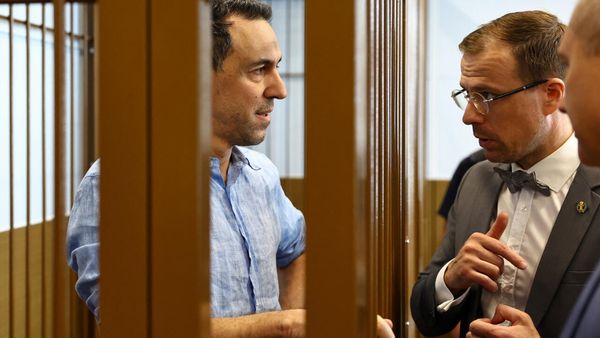
In the late 1950s and 60s, Americans intrigued by their vernacular music began to venture into the places where it was typically made, taking tape recorders with them. For some this was purely a private quest, while others secured tiny budgets from folk music record companies to tape their discoveries at length. Out of this ferment of field recording emerged artists such as the bluesmen Fred McDowell and Robert Pete Williams, and the old-time singer, banjo and guitar player Roscoe Holcomb, as well as “rediscovered” figures from the record catalogues of the 20s including Dock Boggs, Clarence Ashley and Furry Lewis.
Among the rambling recorders who retrieved these musicians from obscurity and enabled them to reach a new audience were John Cohen, Mike Seeger, Sam Charters, Chris Strachwitz, George Mitchell, David Evans and – perhaps the most variously talented of all of them – the song collector, musician, writer, painter and teacher Art Rosenbaum.
Art, who has died aged 83, had unbounded and inexhaustible curiosity. As a teenager with a holiday job in Michigan, he heard the songs of migrant workers and, having taped them, realised this was more than a hobby: “Along with being a passionate enthusiast for the type of music I loved, I was a documentarian.”

A few years later, living in Indianapolis, he came across Scrapper Blackwell, once nationally famous as the guitar-playing partner of the singer and pianist Leroy Carr on bestselling blues records. Blackwell led him to other musicians, and in 1961 the folklorist Kenneth Goldstein, in charge of Prestige Records’ Bluesville label, commissioned Art to record five LPs by Indianapolis blues musicians.
Blues was only one of Art’s interests. While in Indianapolis he also recorded the magnificent old-time fiddler John W Summers. Then, inspired, like so many of his generation, by Harry Smith’s 1952 LP collection Anthology of American Folk Music, he sought out players of old southern banjo styles, such as Buell Kazee and Bascom Lamar Lunsford, and transmitted their music in the instruction book Old-Time Mountain Banjo (1968) and the solo album Five String Banjo (1973).
Art was born in Ogdensburg, New York, the eldest son of Della (nee Spark) and David Rosenbaum, and grew up in Indianapolis, where his father worked as a physician at the Veterans Administration hospital. He studied at Columbia University in New York, obtaining a degree in art history and a master’s in painting. In 1973, he took a post teaching art at the University of Iowa, where he met another distinguished field recorder, Harry Oster, who had found remarkable blues and gospel singers in the backwoods and penitentiaries of Louisiana.
In 1976, Art moved to the University of Georgia at Athens, where he taught at the Lamar Dodd School of Art for 30 years, becoming the university’s first Wheatley professor in fine arts. He and his wife, Margo (nee Newmark), whom he had married in 1966, lived outside the city in an ageing ranch house full of art and banjos. She, too, was a painter and musician, a distinguished photographer and a collaborator in all their work.

Wherever Art went in Georgia, he found music to record, whether it was the old-time stringband led by the fiddler Gordon Tanner, son of the 20s record-maker Gid Tanner, the banjo songs of the “outsider artist” Howard Finster, or African-American “ring shouts” performed by the McIntosh County Shouters.
His work was celebrated in 2007 by the Dust-to-Digital box set Art of Field Recording, volume I, which gathered material from more than half a century, accompanied by his sketches and paintings and Margo’s photographs. In 2008, the set won a Grammy for best historical album and was followed by a second volume. The scope of the more than 200 recordings reveals the breadth of Art’s fascination with traditional music: old-world ballads, sacred music from several southern denominations, dance music, blues – music both professional and amateur, public and private.
“Art was on a mission to go out and meet people who made music,” said Lance Ledbetter of Dust-to-Digital Records. “He recorded their songs, learned them on his banjo, became their friend, painted them in his murals, and invited them to perform at art galleries, museums, concert halls and folk festivals. His mind contained a database of vernacular music but, unlike an algorithm, when Art recalled particular songs or tunes, he did so with warmth and tenderness, drawing from memories of the people who taught them to him.”
Art’s books include Folk Visions and Voices: Traditional Music and Song in North Georgia (1983); Shout Because You’re Free: The African American Ring Shout Tradition in North Georgia (1998); and further instruction books in banjo-playing. A retrospective of his paintings and drawings, Weaving His Art on Golden Looms, was held at the Georgia Museum of Art in 2006.
He is survived by Margo and their son, Neil, and by his brother, Victor, and sister, Jenny.
• Art (Arthur Spark) Rosenbaum, folklorist, painter and musician, born 6 December 1938; died 4 September 2022







